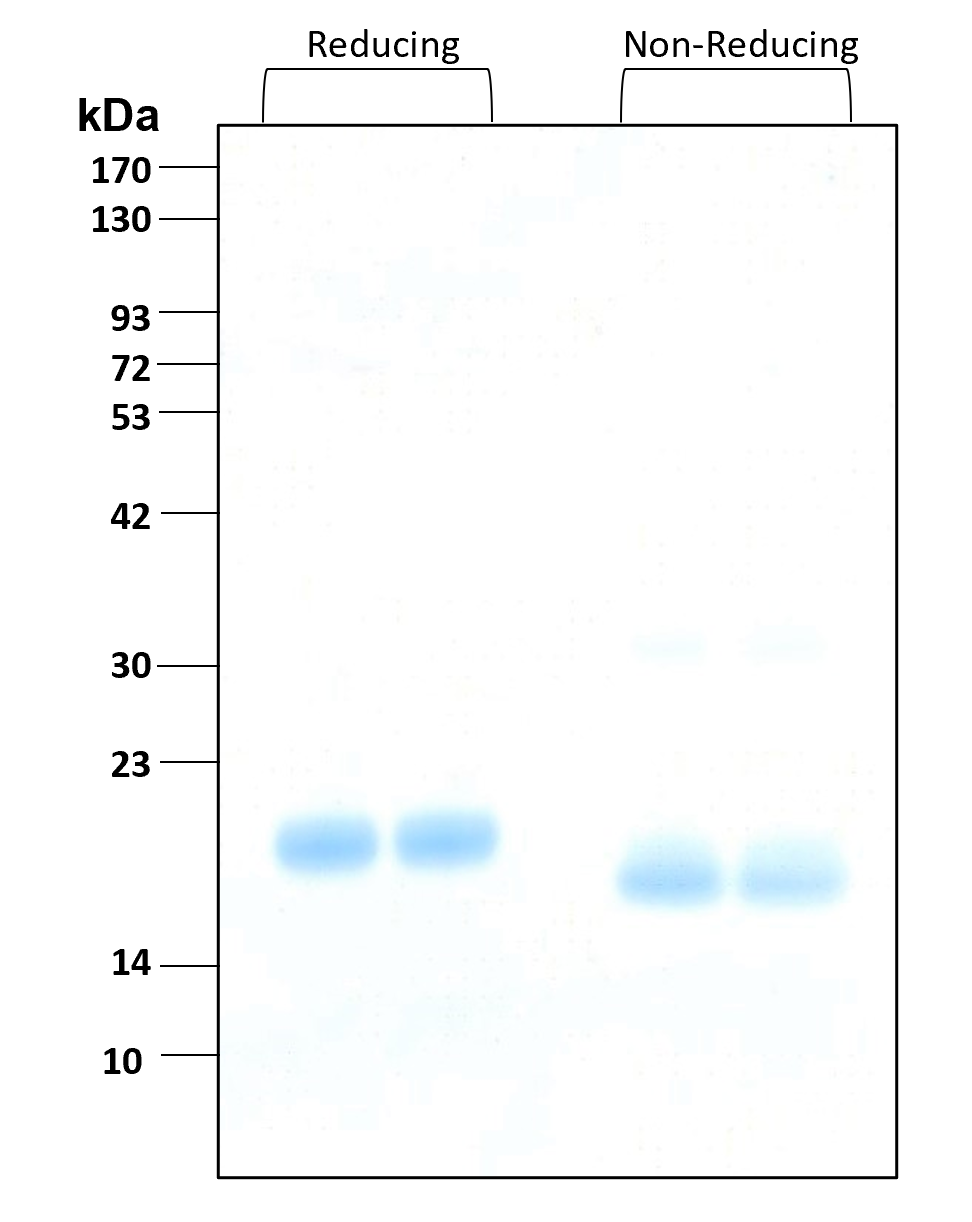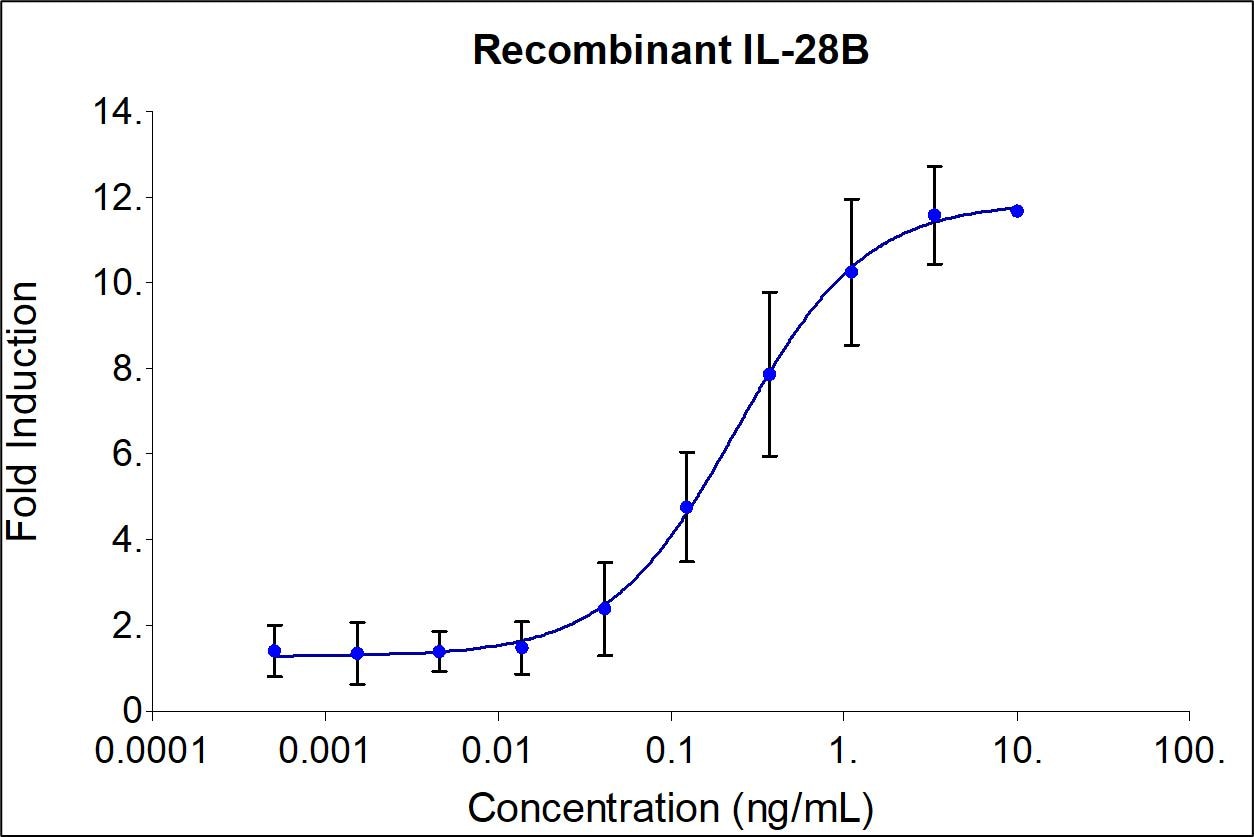Validation Data Gallery
Technical Specifications
| GeneID | 282617 |
| Species | Human |
| Expression | HEK293 |
| Activity(Primary) | 0.07-0.35 ng/mL |
| Purity | >95% |
| Endotoxin | <1 EU/μg |
| Accession Number | Q8IZI9 |
| Molecular Mass | 21 kDa reduced, 19 kDa non-reduced, monomer, non-glycosylated |
| Formulation | 1x PBS, See Certificate of Analysis for details |
| Species Reactivity | human |
Stability and Reconstitution
| Stability and Storage | Product Form | Temperature Conditions | Storage Time (From Date of Receipt) |
|---|---|---|---|
| Lyophilized | -20°C to -80°C | Until Expiry Date | |
| Lyophilized | Room Temperature | 2 weeks | |
| Reconstituted as per CofA | -20°C to -80°C | 6 months | |
| Reconstituted as per CofA | 4°C | 1 week | |
| Avoid repeated freeze-thaw cycles. | |||
| Reconstitution | Briefly centrifuge the vial before opening. It is recommended to reconstitute the protein to 0.2 mg/mL in sterile 1x PBS pH 7.4 containing 0.1% endotoxin-free recombinant human serum albumin (HSA). Gently swirl or tap vial to mix. |
Background
IL28B is a type III IFN, which shares many of the biological effects of type I IFNs but may have fewer side effects due to a more selective receptor distribution. It interacts with a heterodimeric class II cytokine receptor that consists of interleukin 10 receptor, beta (IL10RB) and interleukin 28 receptor, alpha (IL28RA) (PMID: 20712453;12469119;16539846).
Synonyms
Cytokine Zcyto22, IFN lambda 3, IFN lambda 4, IFNL3, IFNL4, IFN-lambda 3, IFN-lambda 4, IL 28B, IL 28C, IL28, IL-28, IL28B, IL-28B, IL28C, Interferon lambda 3, Interferon lambda 4, Interleukin 28B, Interleukin 28C, ZCYTO22
Publications
| Species | Title |
|---|---|
Antiviral Res Antiviral candidates against the hepatitis E virus (HEV) and their combinations inhibit HEV growth in in vitro. | |


